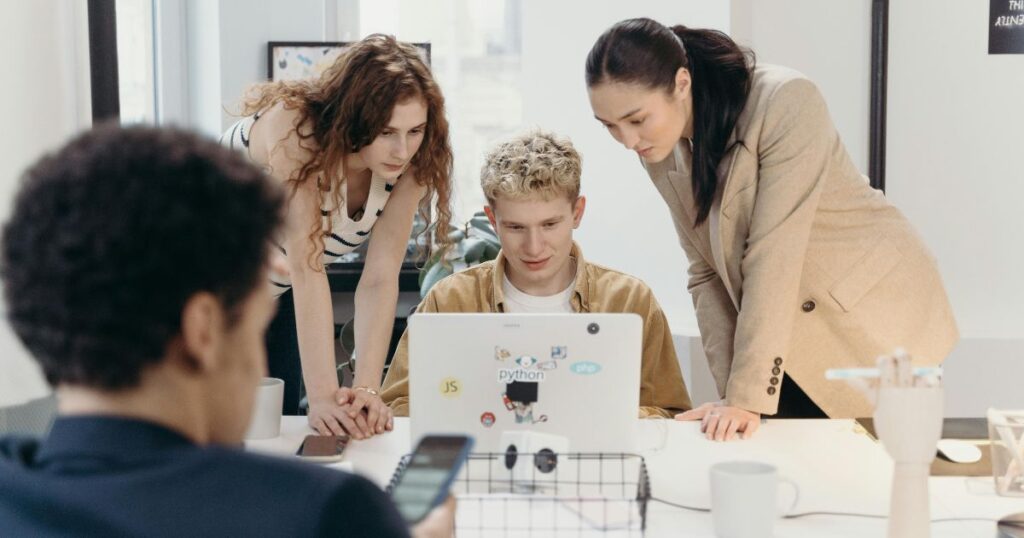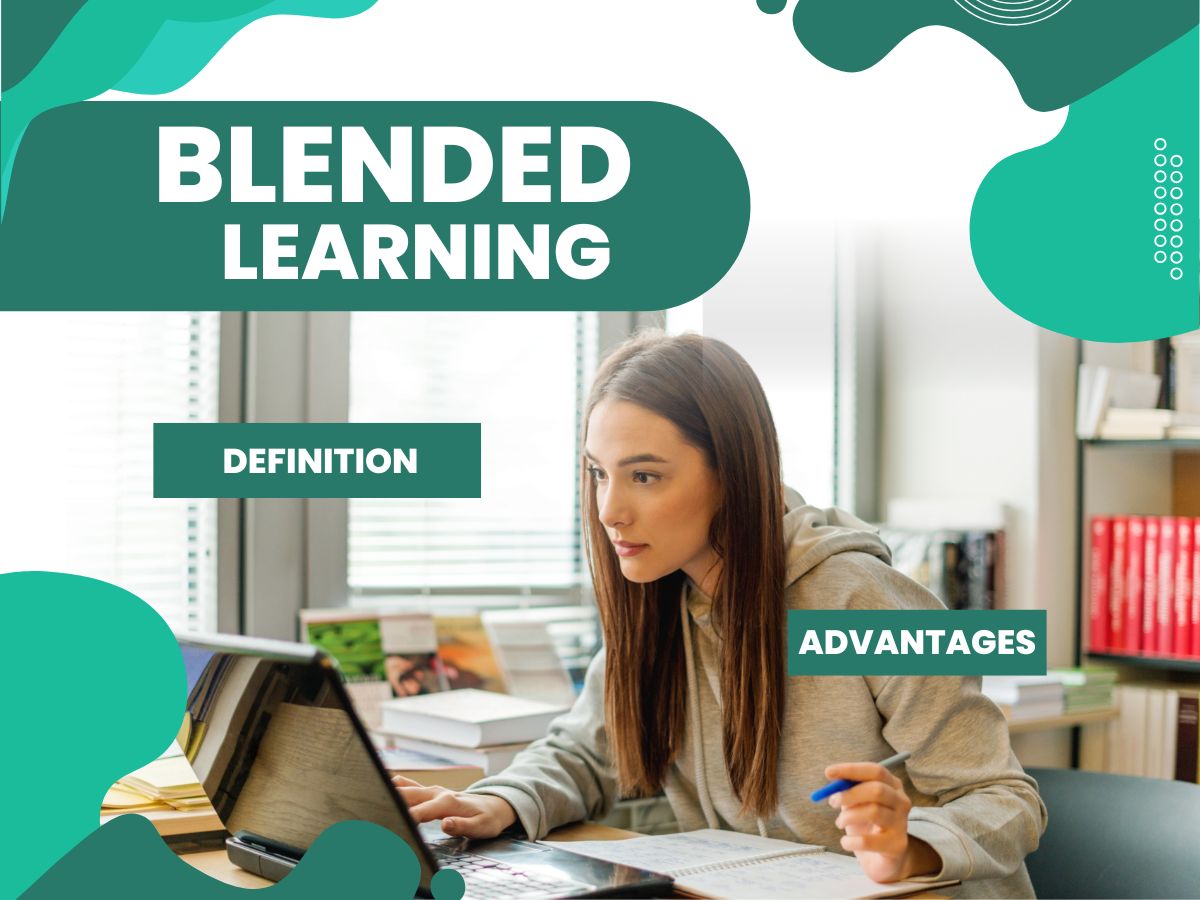Introduction
Blended learning is a teaching method that combines technology and digital media with traditional instructor-led classroom activities, giving students more flexibility to tailor their learning experiences. It is also known as hybrid learning. Blended learning is generally applied to the practice of using both online and personal learning experiences. It consists of learning stations, labs, and a flipped classroom where students practice the lesson before attending face-to-face training.
The Rise of Blended Learning
Blended learning is one of the modern forms of teaching that combines face-to-face conventional classroom sessions with technology-aided sessions. It acknowledges the strengths in both approaches and attempts to construct a new setting where students’ engagement and success can be further augmented. Using technology in the learning process, blended learning enables students to seek content at their own pace with peers and interact with them in groups or collaborative work in class. This sort of education model has become more and more popular in the past years as schools and teachers realize the importance of a heterotrophic and more elastic environment.
Sustainable Learning as a Tactful Educational Model

Blended learning is a modern approach to teaching that combines classroom learning with computer-aided teaching. It provides students with access to instructional materials in a student-controlled timeframe, providing students with a student-paced course experience. Another advantage of blended learning is that active participation and cooperation between students are achieved through the use of web media videoconferencing and discussion forums. For presentation, blended learning creates a flexible and responsive learning system through physical classroom instructions and a variety of online instructions to help meet the needs of learners.
Technological Advancements and Blended Learning
Blended learning has grown in popularity in recent years as a result of technological improvements and the changing educational landscape. The mix of traditional in-person classroom instruction and online learning components is referred to as blended learning. It provides a flexible and individualized approach to education, allowing students to work at their own speed while still benefiting from face-to-face interactions with professors and peers. This form of learning not only develops individual learning and critical thinking skills but also encourages student collaboration and communication.
Student Responsibility in Blended Learning Models
Students are typically expected to take a more active part in their education in blended learning models. Students must take greater responsibility for their actions for blended learning to be successful. Students have the opportunity to get more experience in a subject through experiential learning.
Advantages of Blended Learning

- Safer Environment for Study
Institutions can create a learning environment that keeps staff and students safe. Students can complete their coursework at home and only require in-person attendance a few hours per week. - Increases Engagement
Blended learning boosts engagement by providing various opportunities for students’ engagement through the use of digital engagement tools, images, videos, tables, graphs, and other types of learning resources. This facilitates students’ ability to concentrate, assimilate, and internalize the knowledge they acquire. - Improves Learning Experiences
Blended learning makes learning enjoyable by combining traditional and interactive materials. It enables learners to access interactive content no matter where they are or what topic they are studying. When students study, they feel empowered. - Boosts Soft Skills
Blended learning helps build confidence and success, enhancing communication skills and critical thinking. Blended learning, which emphasizes technology, reaches students more effectively than traditional methods. For improved communication, students will use e-mail, text messages, and social media, which strengthens their communication skills. - Easy Accessibility
Students can access material with no constraints, such as schedule conflicts, by having resources online. Online materials can be found on smartphones, tablets, and desktop computers, which are technologies we already use daily.
Conclusion
Finally, blended learning encourages students to experiment with technology and different tools or techniques for learning. It raises educational quality and information assimilation while making teaching more efficient and productive. Blended learning is an instructional powerhouse that marries traditional classroom instruction with digital learning tools to create a dynamic and flexible learning environment. Intrinsically, the combination of face-to-face experiences and technology-infused learning affords students relative independence in taking control of their learning while benefiting from teacher guidance and peer collaboration. Thus, this approach inspires them to actively learn, enhances achievement, and produces desirable soft skills such as communication and critical thinking.
Some of the technological advances and the need for flexible learning systems have meant an increasing incidence of a blended model of learning. Access, inclusiveness, and safer learning have made blended learning a powerful solution for this education system. It allows schools and learning institutions to implement this mandate and hence achieve best practices for sustainable success, such as quality in digital resources employed and the insurability of active learners.
Blended learning is the most sustainable approach to learning in the future, catering to learners with the tools and skills to survive in the technology-driven world.
You may like to read: 4 Types of Learning Styles | How to Teach Them
E-learning is the Future of Education: Top Reasons
- How to Dominate Your Online Business With 5 Proven Digital Marketing Strategies
- How to Cultivate Critical Thinking and Problem-Solving Skills in Classroom
- Top Proven Mental Health Strategies for Schools in 2025-26
- Time Management for Teachers: How to Plan, Prioritize, and Perform Better
- How Parental Involvement in Education Shapes a Child’s Growth and Success
Frequently Asked Questions
1: How might blended learning be defined and what does it involve?
A: Blended learning also referred to as Hybrid learning is a technique that combines face-to-face classroom training and other online sessions. It has learning stations, online labs, and a model in which prior content is taught through virtual means and follow-up teaching is done face-to-face. This asynchronous mode of tutorship gives the students opportunities to learn at their convenience and enables them to combine online classes with face-to-face tuition if necessary.
2: Why has blended learning become the buzzword in institutions over the past few years?
A: Teachers are incorporating blended learning methods in their classrooms because of technological advancements and increased flexibility in learning models. This method acknowledges the strengths of face-to-face online and physical classes, thus enhancing the students’ interactions and overall campus performance. Blended learning is self-centred and suits all learning needs since it avails knowledge anytime to the various students.
3: What can students benefit from using the blended learning model?
A: There are numerous benefits of blended learning, which include; a safer environment in which learners take their classes, higher learning satisfaction due to the use of interactive tools, better learning experiences, enhancement of skills in particular skills like communication and critical thinking, and easy access to the learning material. It also helps a student to be more responsible and in charge of the lessons they are undertaking as well as letting a student execute instructions at his or her own pace.
4: In what ways can blended learning lead to students’ engagement?
A: One of the advantages of blended learning is that it employs videos, photos, tables, graphs and any other form of interacting information, which captives students’ attention to learning. These different tools help the pupils understand the following. These different resources assist students in understanding and exhibit better comprehension and learning assimilation hence enhancing learning achievement.
5: Does blended learning help students build soft skills? If so, how?
A: Yes, blended learning can help students develop important soft skills such as communication, critical thinking, and self-confidence. By incorporating technology into the learning process, students are encouraged to communicate via email, social media, and text messages. This contact improves communication skills, whereas self-paced learning develops critical thinking and decision-making ability.



